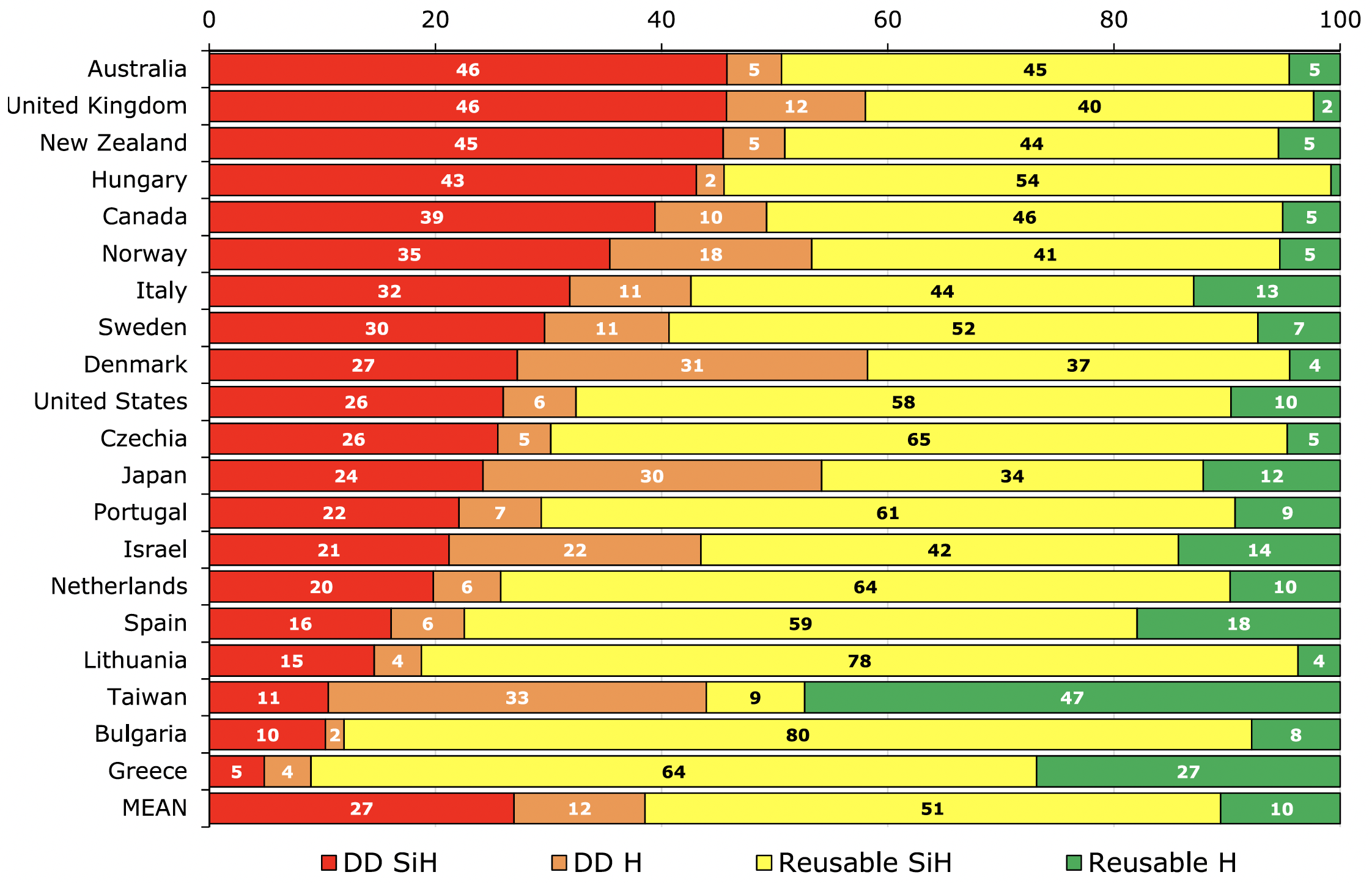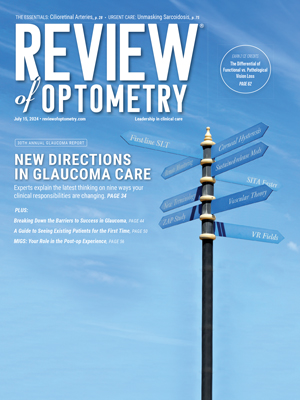 |
| Overall, toric soft lens prescribing almost doubled over the time-course of this survey, from 24.4% of standard soft daily wear single vision lens fits in 2000 to 46.2% in 2023. This chart from the study shows the proportion of 2023 toric soft lens fits in terms of replacement frequency (daily disposable vs. reusable) and material type by country. Photo: Efron N, et al. Cont Lens Anterior Eye. July 11, 2024. |
Over the past 50 years, there have been significant advancements in toric soft contact lens design and manufacturing technology and increased product availability. An international consortium has been conducting an annual survey of contact lens prescribing in up to 71 countries since 1996 and has published two previous papers specifically on toric soft lens prescribing up until 2011. Their recent paper, which was published in Contact Lens and Anterior Eye, provided an update of toric soft contact lens prescribing up until 2023. It reported a significant increase in toric soft lens prescribing over the first quarter of this century, such that virtually all clinically significant astigmatism is being corrected among soft lens wearers.
An annual contact lens prescribing survey was sent to eyecare practitioners in up to 71 countries between 2000 and 2023. Data relating to 220,934 standard soft daily wear single vision lens fits undertaken in 20 countries returning reliable longitudinal data were analyzed in respect of toric soft lens fitting.
Overall, toric soft lens prescribing almost doubled over the course of this survey, from 24.4% of standard soft daily wear single vision lens fits in 2000 to 46.2% in 2023. There were significant differences between countries in toric soft lens prescribing. Of all standard soft daily wear single vision contact lenses prescribed to males, 32.0% were toric soft lenses, compared with 28.7% for women. The mean age of toric soft lens wearers was 30.5, compared to 27.9 for spherical soft lens wearers. An analysis of 13,582 recent toric soft lens fits (from 2019 to 2023) in terms of material type and replacement frequency revealed the following proportions: reusable silicone hydrogel (51%), daily disposable silicone hydrogel (27%), daily disposable hydrogel (12%) and reusable hydrogel (10%).
The gradual increase in toric soft lens prescribing was attributed to the growing skill set and confidence of practitioners in fitting such lenses. The researchers cited three main factors that can explain the increasing rate of toric soft lens prescribing.
“First, improved manufacturing capability has resulted in the production of numerous toric lens designs with effective stabilization mechanisms. Second, the correction of astigmatism in contact lens wearers has gradually been satisfied over time and has instilled greater confidence in their performance,” the study authors wrote in their paper. “Third, there has been an increase in the parameter range of daily disposable toric lenses over the course of this survey; in particular, greater availability of cylinder axes and more cylinder powers. Given the substantial increase in the extent of daily disposable lens prescribing in general over the same period, the extended parameter range of this lens type has further boosted the overall extent of toric soft lens prescribing.”
Interestingly, ophthalmology is the predominant contact lens prescribing profession in three of the four countries (Bulgaria, Japan and Lithuania) that displayed appreciably lower levels of toric lens fitting.
Efron N, Morgan PB, Woods CR, et al. International trends in prescribing toric soft contact lenses to correct astigmatism (2000–2023): an update. Cont Lens Anterior Eye. July 11, 2024. [Epub ahead of print]. |

